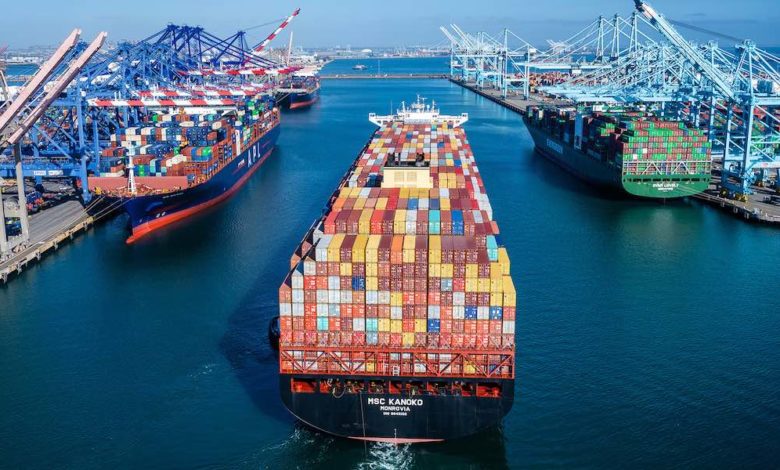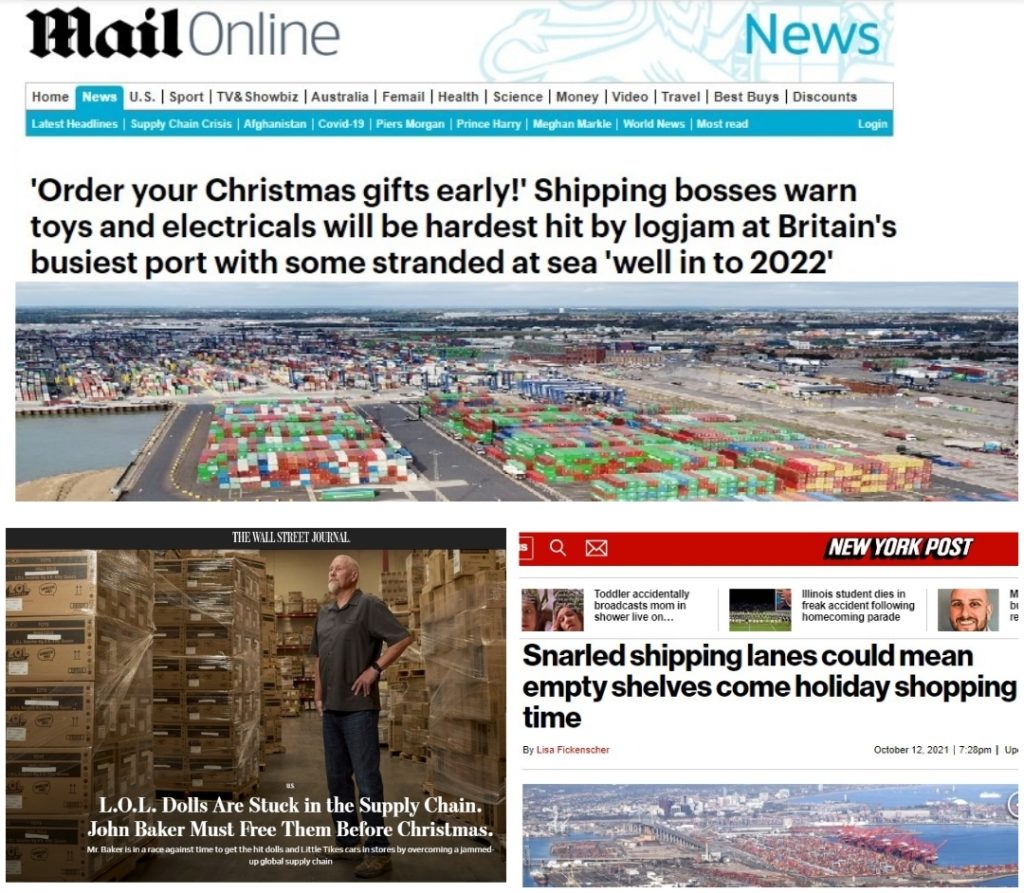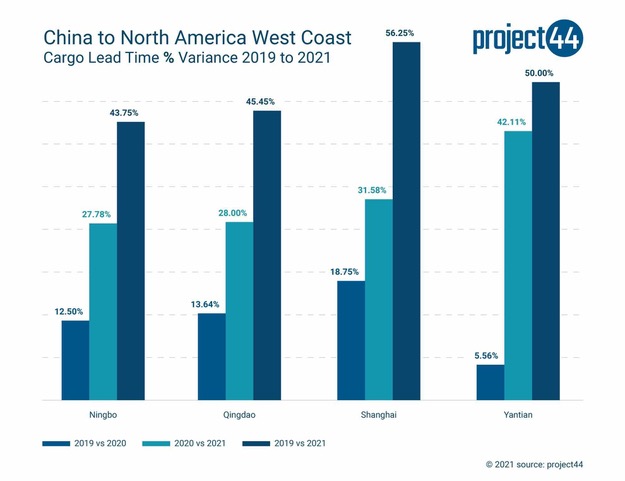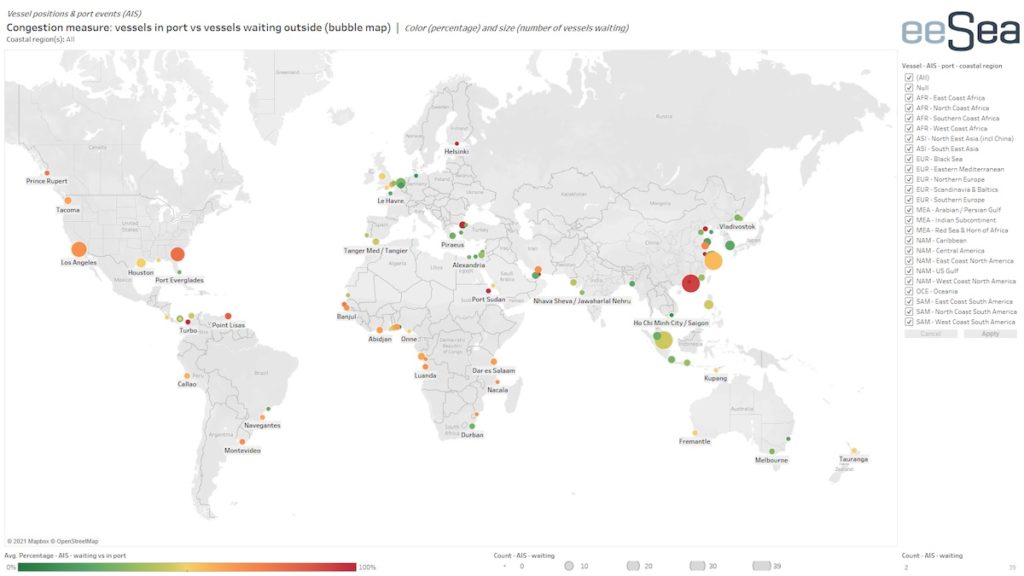Misplaced Christmas empty shelf paranoia sweeps across the press

There appears to be a massive disconnect between frenzied tabloid headlines in the Western mainstream media about empty shelf paranoia in the run up to Christmas and the reality on the ground at key hubs around the world.

The absolute worst in terms of global port congestion has passed multiple data points confirm, and the pressure is now on inland links to move the goods in time to make into Santa’s sack for December 25.
The latest global port congestion bubble map from Danish liner consultant eeSea (see below) shows the most talked about congestion areas – Shanghai and Ningbo in China and Los Angeles and Long Beach in California – have retreated from red to amber in terms of the scale of severity with 62 boxships waiting outside the two Chinese hubs, down by more than 50% since Splash last covered eeSea data seven weeks ago. Outside the southern Californian gateways there were 54 ships waiting this morning, down from highs of in excess of 70 vessels recorded last month.
We almost appear to be heading into a state similar to Eastern Europe during the Cold War with massive lines outside stores
The one red dot on the global map provided by eeSea is in south China, but even here that is a temporary blip following the passing of two typhoons near Hong Kiong and Shenzhen in the space of one week.
Moving boxes from the ports inland remains the biggest issue facing retailers in the run up to Christmas, something felt most acutely in the US and the UK at the moment.
Data from tech firm Project 44 shows orders from China are reaching American customers with a delay of at least 10 days compared to 2019 pre-pandemic delivery times.

Aside from the well documented delays on the transpacific, the box snarl-ups have also being keenly felt on the other main east-west tradelane, connecting Asia with Europe. Alphaliner data shows container ships are currently arriving with an average delay of 18 days in China after a full round trip between the Asia and North Europe.
Trying to temper the hysteria among many mainstream media outlets about a doomed Christmas, Lars Jensen, CEO of liner consultancy Vespucci Maritime, took to LinkedIn today to ridicule much of the reporting.
“The current supply chain challenges appear to give rise to ever more overblown press headlines raising fears of a disastrous upcoming holiday season plagued by empty shelves,” Jensen wrote, adding: “We almost appear to be heading into a state similar to Eastern Europe during the cold war with massive lines outside stores to get the bare essentials if we are to believe the headlines.”


If the Mail says it one can be pretty certain it is hyperbole of wrong. It is also attempting to divert attention away from the supply chain disasters caused by Brexit, which it pushed very hard for.
This article seems to highlight a disconnect between the professional maritime shipping commentators and the end-user consumers.
The Daily Mail and other UK-centric media are building a head of steam to create a dramatic story which is specific to the UK political background. There is no doubt that the UK has compounded its own miseries because of the specific Covid and Brexit issues.
However, the wider global problem of distribution and the current buzz phrase which populations (and consultants) are throwing around as if they understand it to be a single over-arching topic is ‘supply chain management’. This is a multi-layered set of operational and physical distribution issues – most prominent of which is the driver’s and trucking shortage but it also extends to warehousing space, Customs processing, carbon dioxide shortages, the tumbling world price of pork, the increasing prices for commodities and energy……in a word – Uncertainty.
This also points to an over-supply of information, where the internet and other media channels pump out so many ‘facts’ that we can no longer see the wood for the trees.
Bottom line? Yes – there will be shortages of certain goods in certain places and the vast and almost obscene variety of goods offered will not be so vast or so immediately available, so the Daily Mail is right insomuchas goods should be ordered early or they will not be delivered in time. This will not be because of container shortages or queues of vessels outside Qingdao or Long Beach or Felixstowe but because they cannot be delivered in such quantities to such a variety of places in every shape size and colour that we were promised by Walmart, Amazon or Tesco.
Thank you Martyn. This needs to be ‘done up’ and published. Other sides of the story needs to be out there.
Brilliant assessment, as was Mr Jensen’s original article. it’s time for everyone to maintain a sense of perspective and understand the self fulfilling prophecy of such comments. We’ve just had a fuel crisis caused in no small part by sensationalist headlines inducing a sense of panic. “Shop early,” said one freight forwarder. “Don’t shop at all,” said Grumpy from Green Street Green, Orpington. Another day, another reason we all need to remember the moral behind the Chicken Licken story.